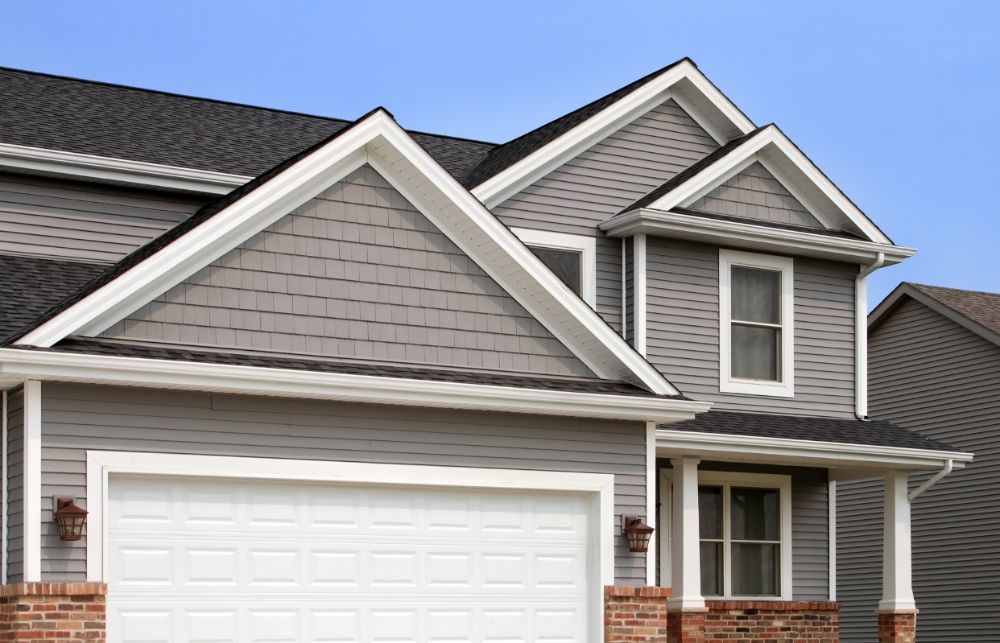Your home’s siding acts as a bastion against the elements from the outside. When combined with your roof, these two buildings provide you complete protection against whatever the weather may throw at you—rain, snow, intense heat, bone-chilling cold, and more. The lifespan of your home’s siding and its appearance are both dependent on how well you take care of it. Depending on the material of your siding, different maintenance will be required, but all preventative measures will help prolong the life of your siding. This is why we’ve prepared a guide on how to keep your home’s siding in excellent shape.

Look Out for Damage
The key to preserving your home’s siding is to frequently check for damage. Some types of damage, like major storms or strong impacts, are more visible than others. Chances are, if this type of damage occurs, you’ll notice it immediately. After large storms, take a walk around your property to check for and address any problems.
Maintain Your Paint and Sealant
A new coat of paint always makes a room feel brighter. When it comes to siding, regardless of the sort you have, you should be repainting and sealing as needed. Paint your wood siding every five years, or as soon as you notice any damage such as chipped paint. Are you looking for an eco-friendlier option that is also easy to manage? If so, staining your wood siding replacement in Ocean City is a great choice! People don’t usually have to paint vinyl siding, but some people do it to help make it last longer and look nicer.
Fiber cement siding replacement in King of Prussia is resistant to damage and wears, meaning that a simple coat of paint can last for up to two decades. If you want to paint the house a different color or sooner, that’s not a problem. Just make sure you’re using acrylic paint intended for outdoor use.
Protect the Vinyl
If you have vinyl siding, there are a few more steps of caution you should follow to help it endure as long as possible. Vinyl is sensitive to heat, so you’ll want to keep it as far away from any direct sources of heat as possible. Vinyl is hardy enough to endure harsh conditions, but you don’t want to put it under any unnecessary strain. As well, vinyl siding has a greater resistance to heat and fire than other siding materials, so it’s safer to keep your vinyl siding away from hot sources of energy. Otherwise, you might find out that you’ve melted a wall–successfully.
Keep it Clean
If you don’t see any damage after examining your siding, it’s time to give it a thorough cleaning. Regularly cleansing your siding will remove any unwanted buildup of grime, mildew, and dirt, allowing your home to regain its original beauty. If you want easy and speedy results, put your money into a quality power washer. This will help you get rid of any unpleasant build-up and provide the power you need to get to hard-to-reach places. Power washers are most effective on vinyl and wood siding, although they should be used cautiously on masonry structures to avoid premature mortar deterioration.
Trimming Your Landscape
Another way to increase the longevity of your home’s siding is to maintain your landscape. Keep bushes, trees, and nearby shrubbery trimmed and tidy so they don’t damage your home’s siding. Routinely trimming your landscape will prevent any unnecessary damage. This will help protect your home’s siding, lead to fewer clogged gutters, safeguard your roof, and make your yard look great year-round.
Damage Repairing
When you’re repairing your siding, if you notice any damage, it’s critical to repair it as soon as possible. The more time you spend procrastinating, the worse the damage will be, and it’ll end up costing you additional time and money to fix. A general guideline is that unless you know how to fix things or have the experience required, it’s best not to try and repair something by yourself. In the long run, it could end up costing you a lot more money.
0 Comments